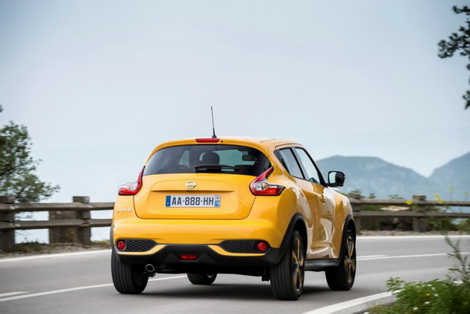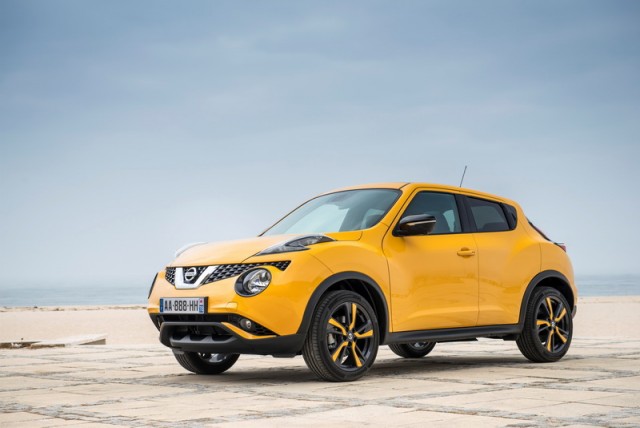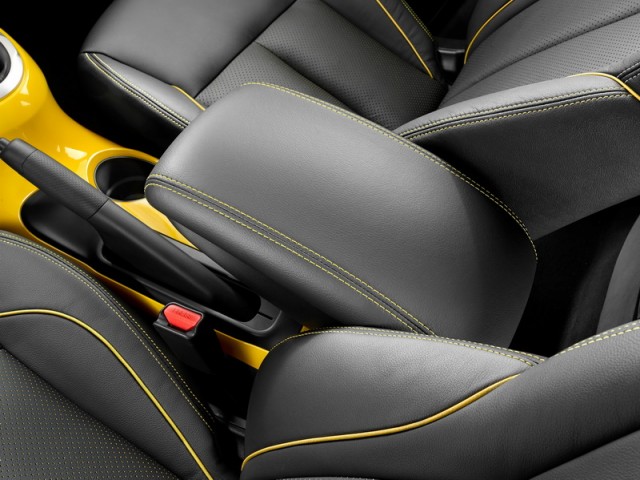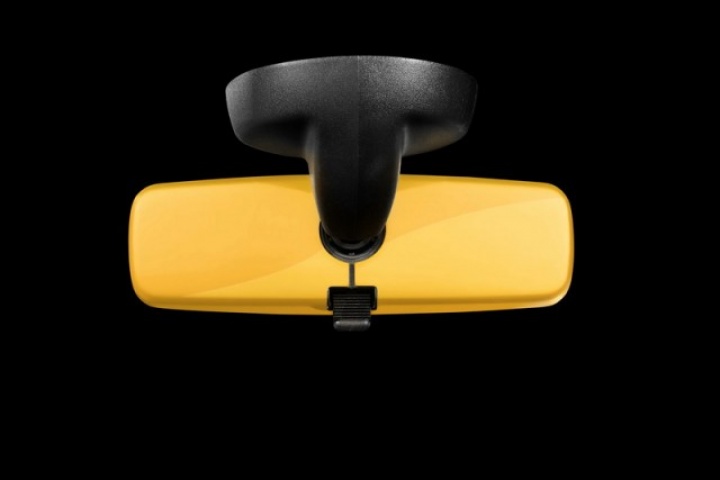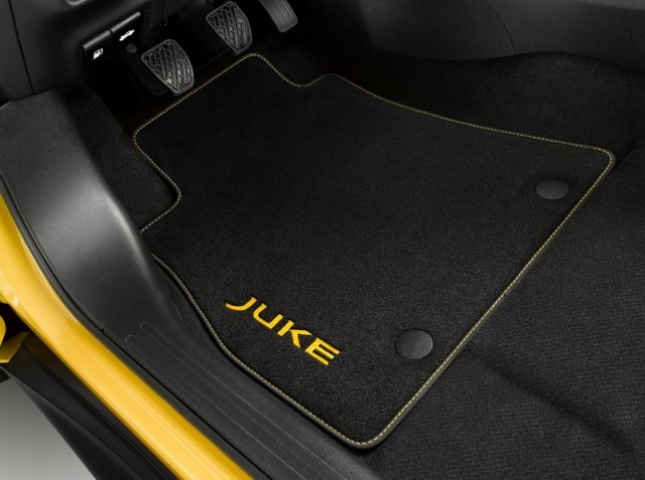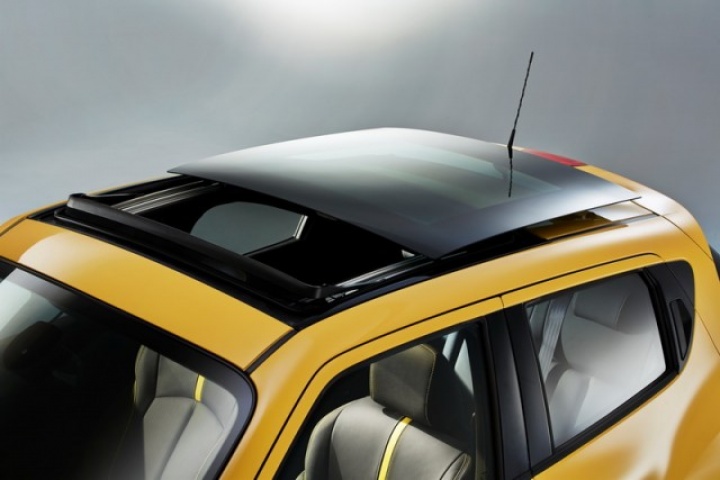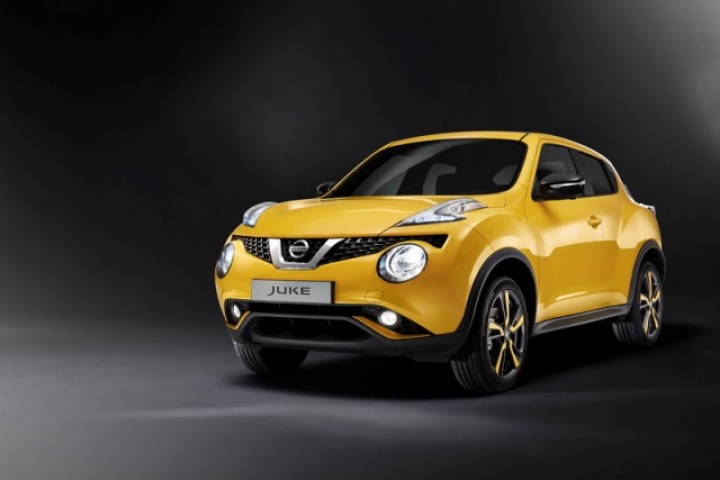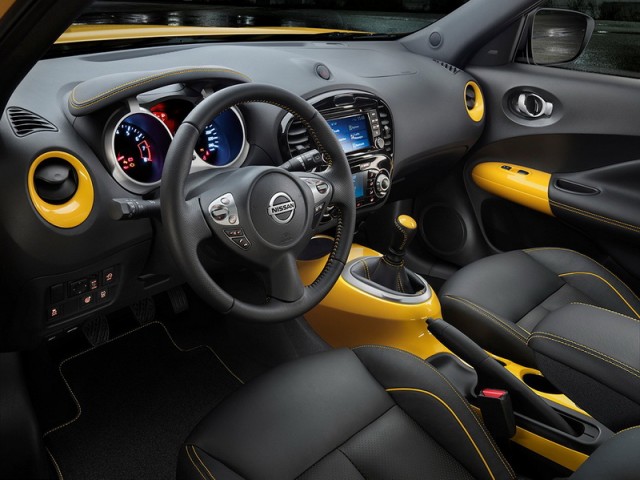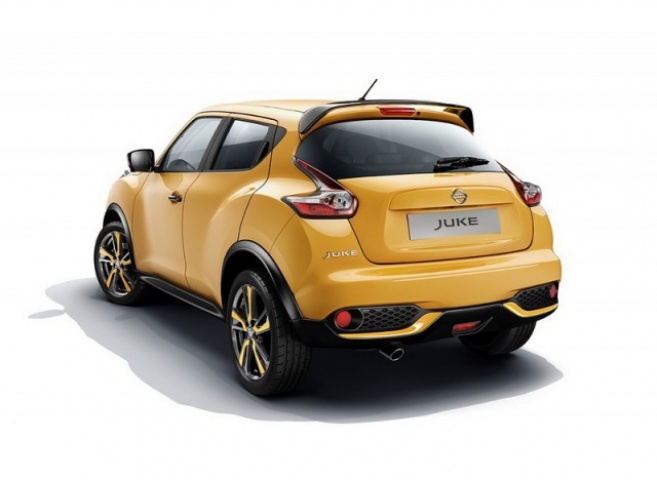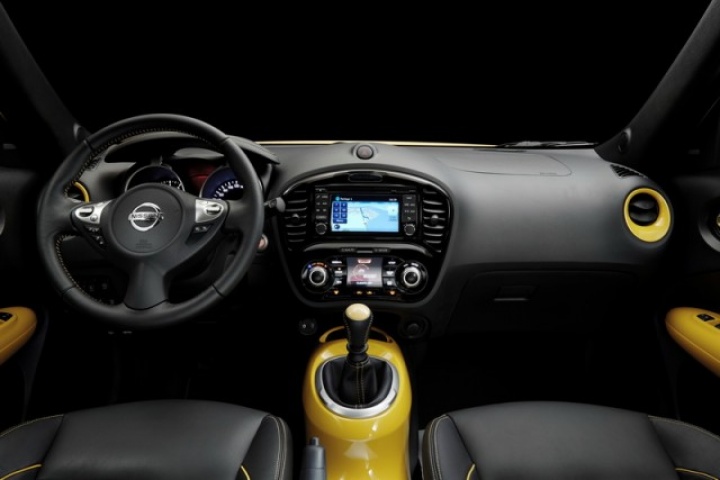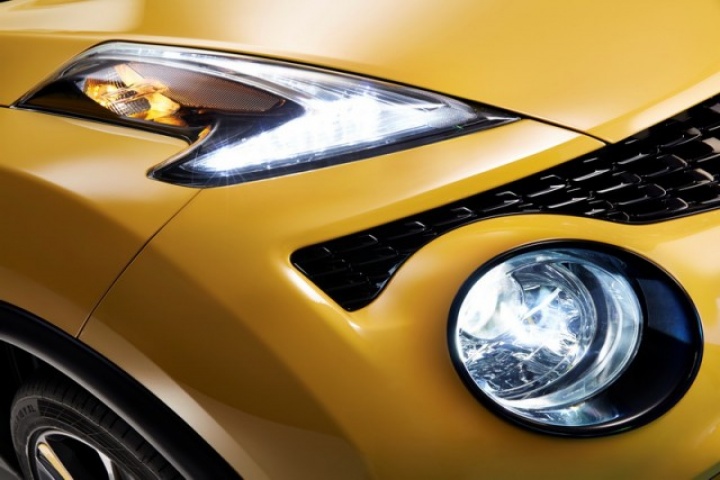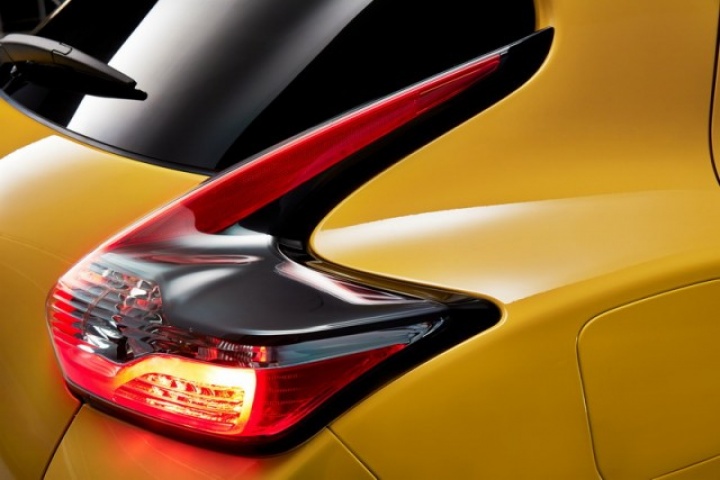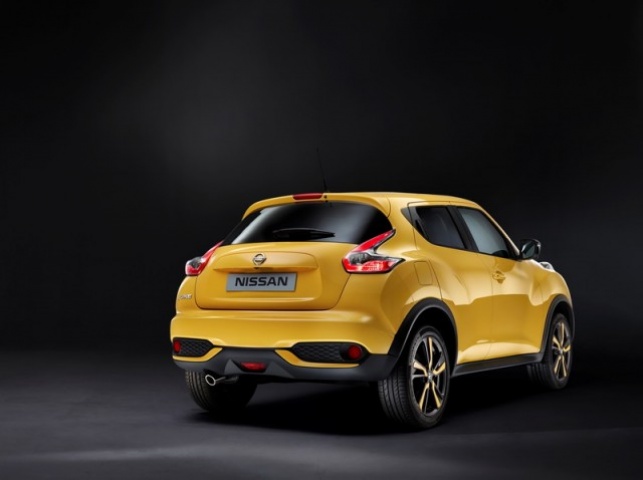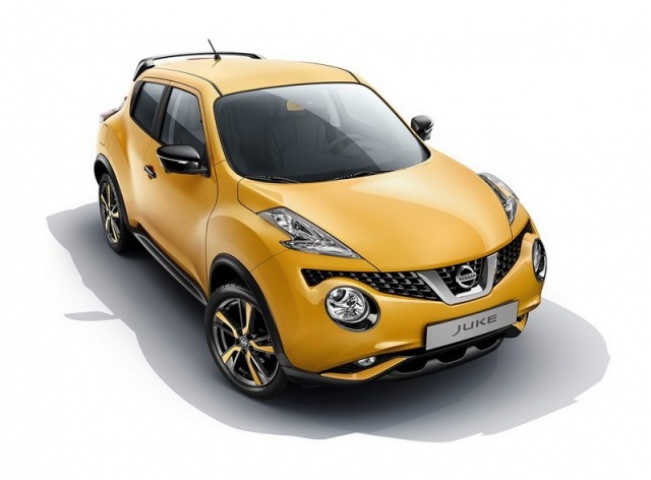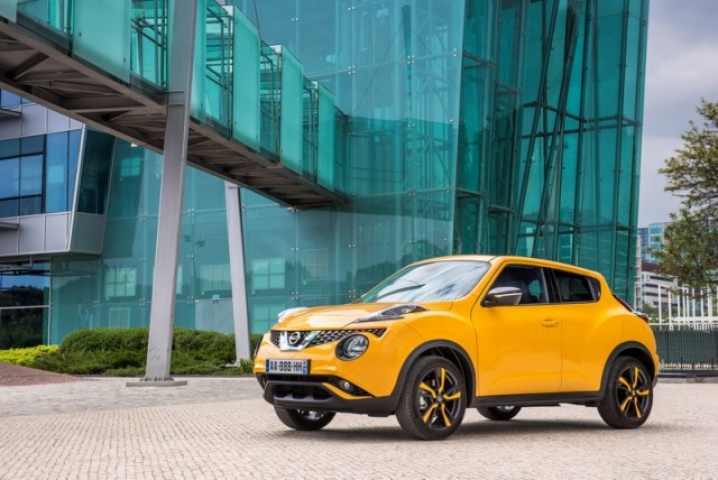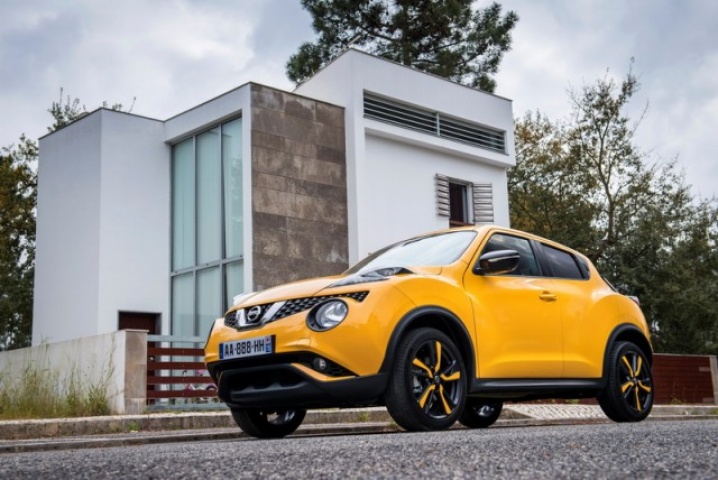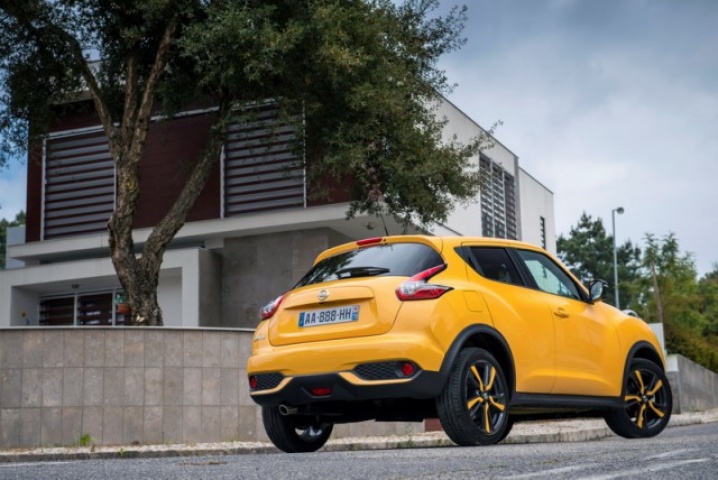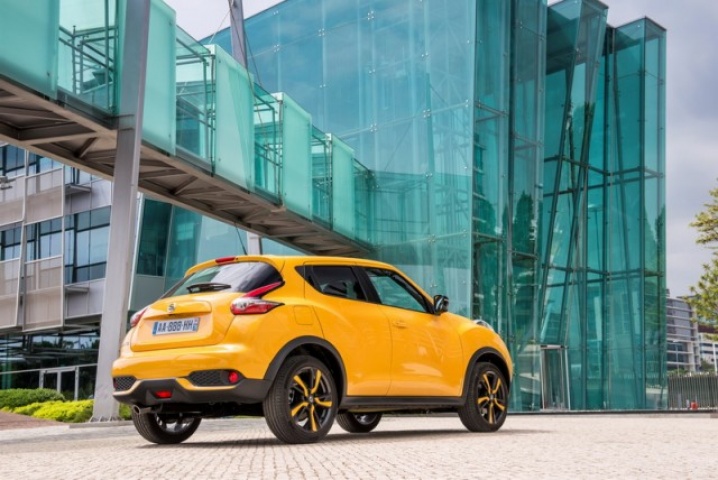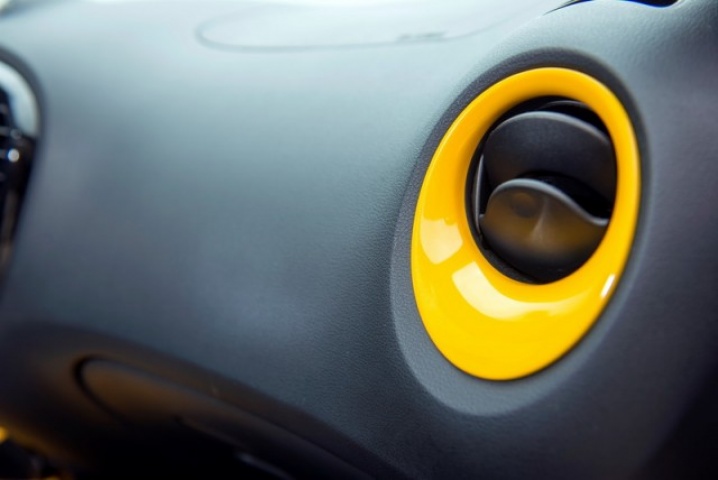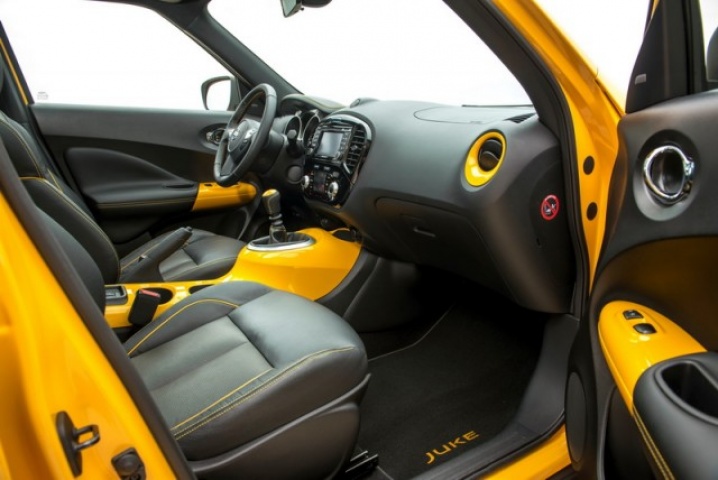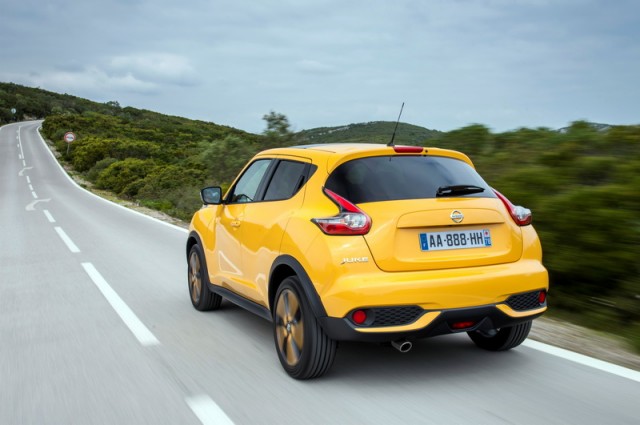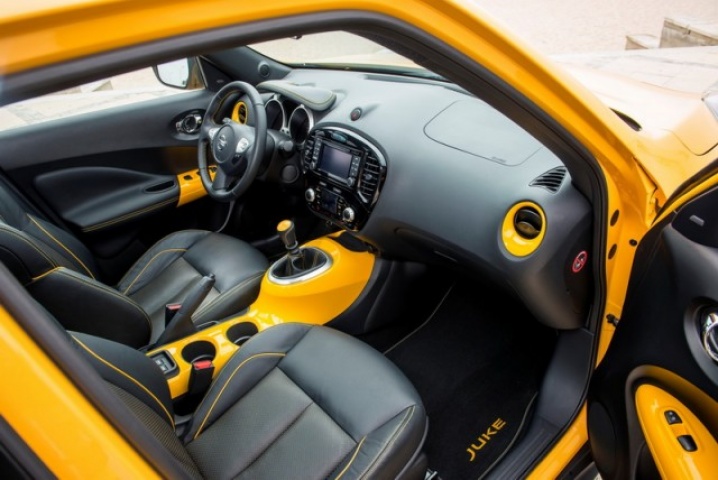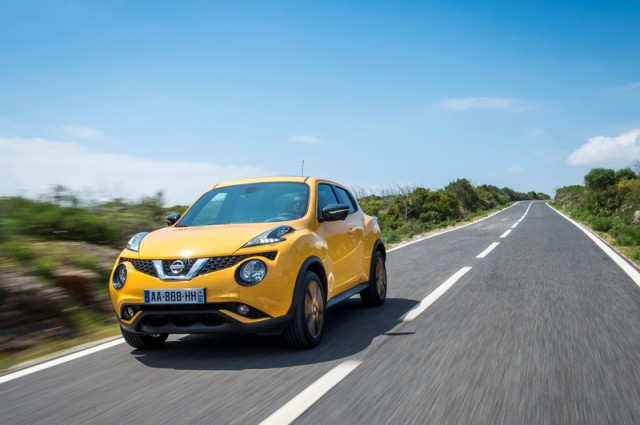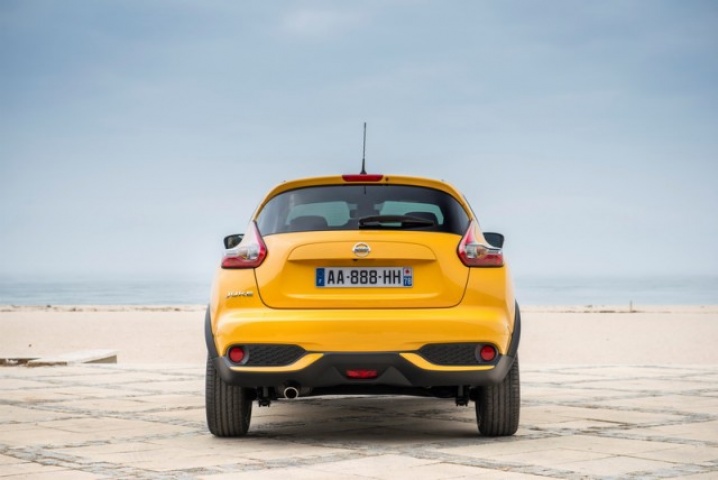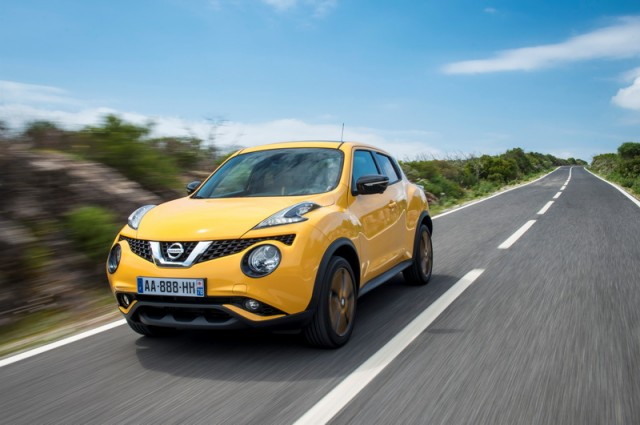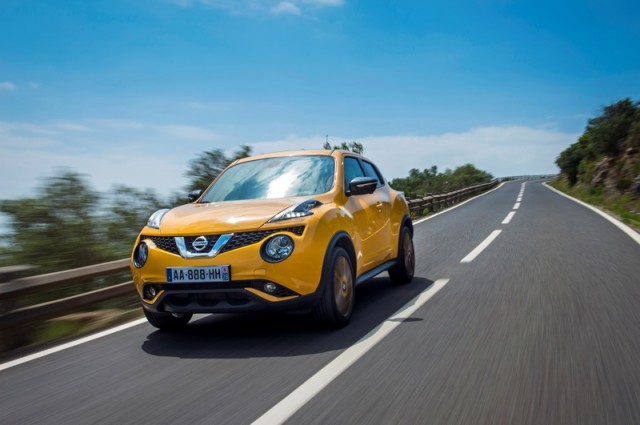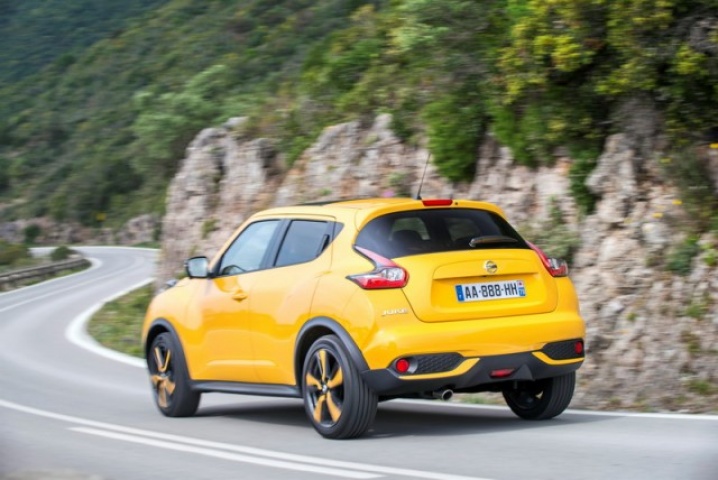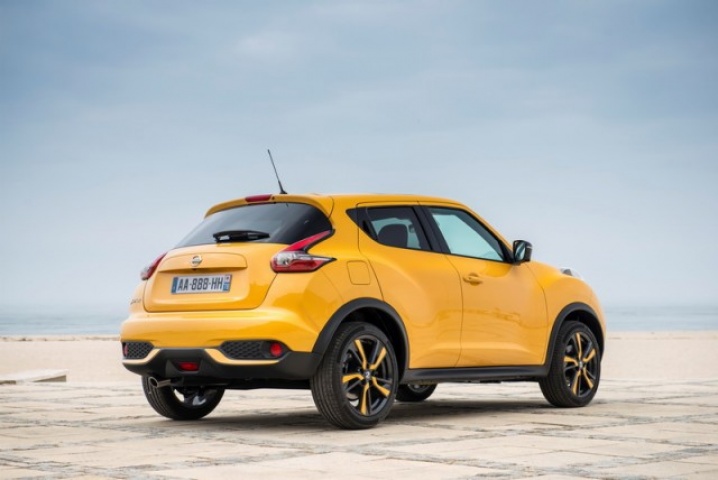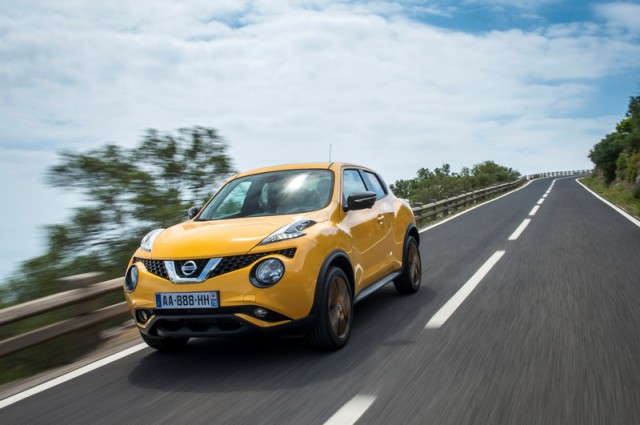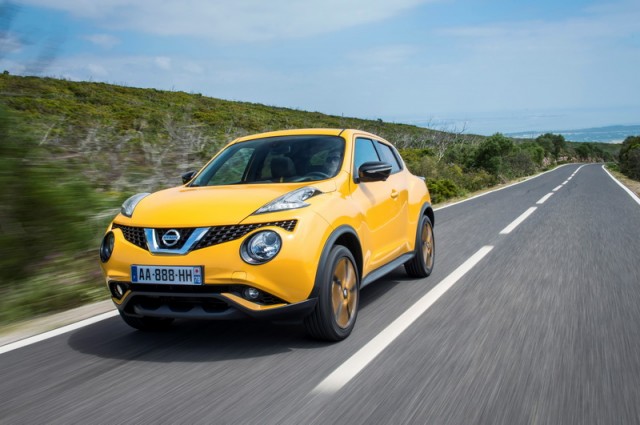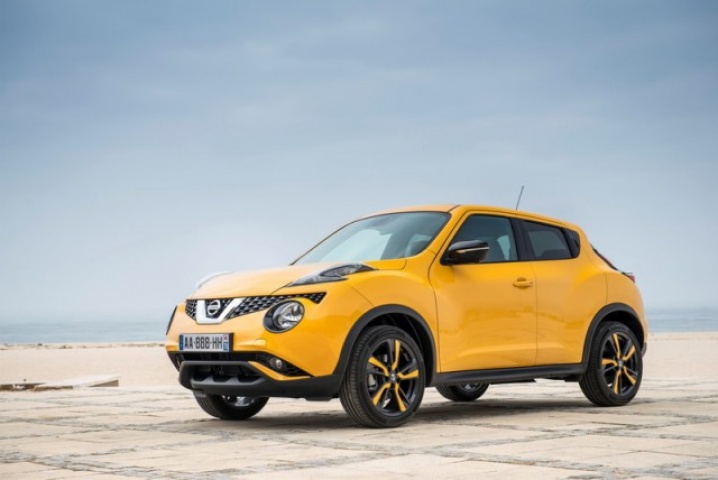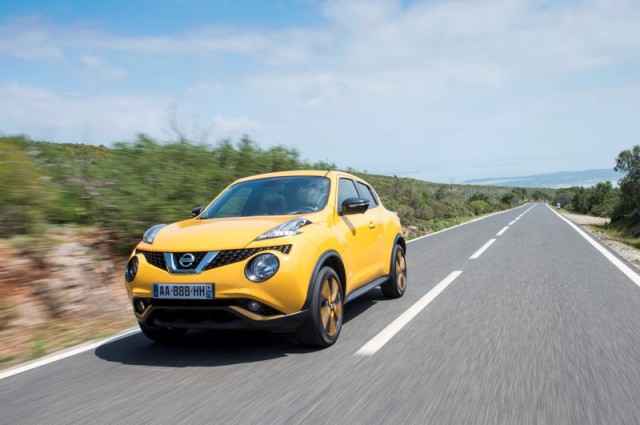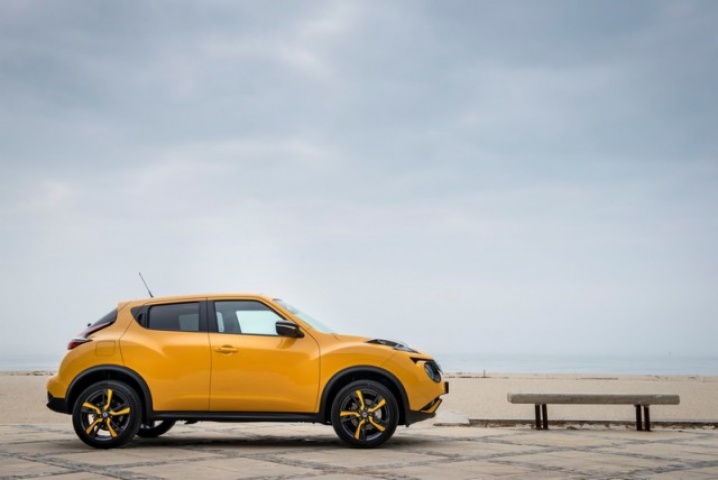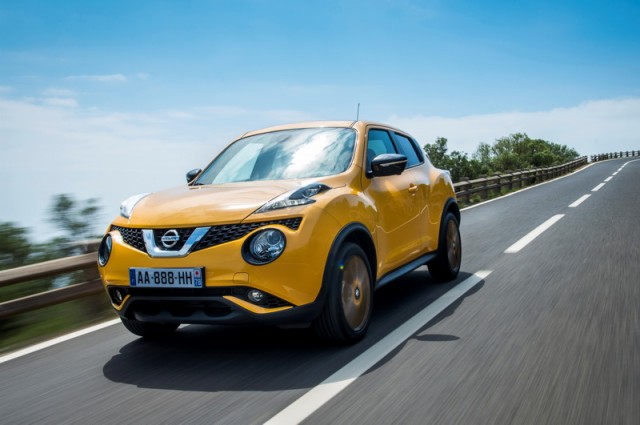Overall rating: 4/5
Nissan has played to the Juke's strengths by emphasising its looks and value for money, but has also improved the car in some important areas meaning it is likely to be as popular as ever.
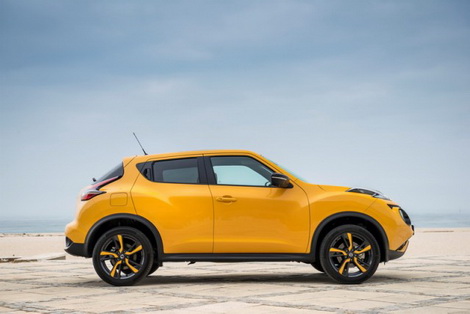
In the metal 3/5
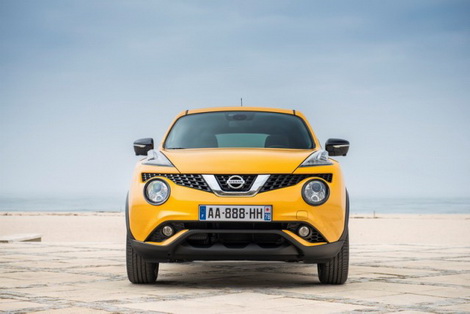
If ever there was a Marmite car the original Nissan Juke was it. It really was a case of love or hate the extrovert exterior styling with its 'bug eye' lights and sloped off roof that sacrificed practicality in the name of style. It built up quite a few fans however with over 500,000 examples sold since it was introduced in 2010, forcing many rivals into hasty rushes to the drawing board to conjure up their own urban-SUV. It is not as if they could sit on their laurels because, according to Nissan, 85 per cent of Juke buyers are 'conquest' customers - or those they have pinched from their rivals.
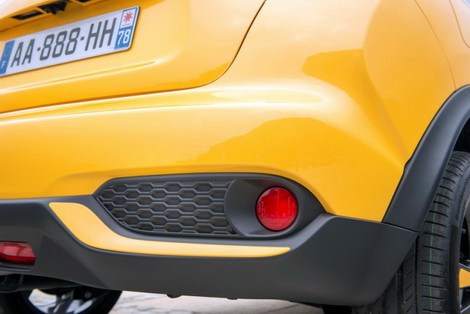
It would have been easy for Nissan to tone down the looks of the refreshed Juke to appeal to a broader base, but the designers quickly realised that the polarising looks are part of the appeal so merely 'tweaked' them with sharper lights front and rear, redesigned bumpers and the introduction of personalisation options á la Opel Adam, Citroen DS 3, Fiat 500 et cetera. Thankfully the options are not as bewildering as the million and one combinations offered by Opel; you can have contrasting colours for the mirror caps, headlight surrounds and bumper details with your chosen colour picked up on the centre console, air vent surrounds and stitching on the seats. You can even have colour coded wheels via plastic inserts for each spoke or, if you are feeling particularly adventurous, have a different colour for each spoke.
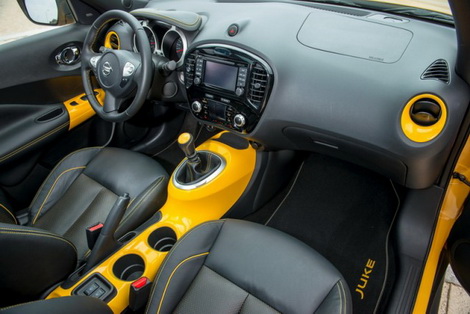
Inside, Nissan has seen fit to address one of the biggest criticisms of the Juke, its boot space. Beforehand it held a paltry 251 litres (which we are sure is smaller than the suitcase we brought to the launch) to a much-more-like-it 354 litres. The rest of the interior seems to be a case of 'as you were'. That means tight space in the back and just about enough up front. Only it isn't exactly the same; there are some tweaks in there to make your life that little bit easier even if most will initially not pick up on the differences. Take for example the mobile phone cubby on the centre console. Previously this was distinctly iPhone sized, but has been enlarged to happily accept a Samsung Galaxy or similarly sized smartphone. Material with more grip has also been added meaning you shouldn't have to fish your phone out of the passenger footwell after a drive. Then you have the cup-holders, which are now deeper so as to accept a tall can of Red Bull rather than a stubby Coke can. It is the small things that count.
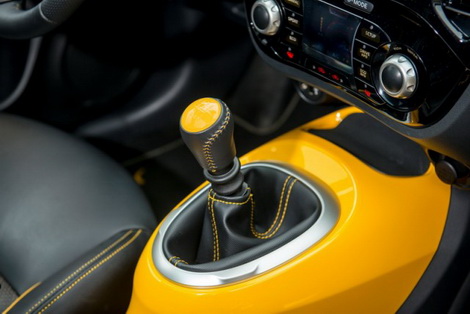
Driving it 3/5
The big news for the 2014 Juke is the introduction of a new turbocharged 1.2-litre petrol engine. This is the same unit as used in the Qashqai - and also the Renault Mégane - and it replaces the trusty old 1.6-litre engine in the line-up. Nissan Ireland expects the new engine to account for a sizeable chunk of Juke sales going forward (it will still be outsold by diesel, but only just) and this is a good thing as the engine is a cracker, definitely more so than in the two larger cars it already features in.
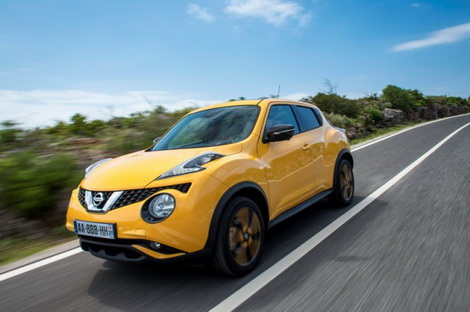
Offering 115hp it has the same output as the naturally aspirated 1.6 of old, but more importantly, being turbocharged, it has 190Nm of torque that comes it at 1,750rpm rather than 4,000rpm as before. This means the Juke is a more pleasant city cruiser, able to call upon its power reserves in stop-start traffic without having to wring the neck out of the engine. On the open road it also performs well, helped by the precise action of the six-speed manual gearbox. You do still have to plan overtaking on the open road, and possibly drop a gear or two, but high speed is not where the Juke is most comfortable.
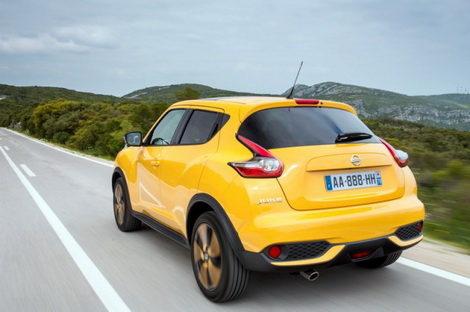
And this is shown in how it handles. Nissan's engineers have merely 'tweaked' the suspension to allow it to smooth out bumps rather than overhaul it in a manner that would allow you to take a corner with some vigour. Do so and the result is an alarming amount of understeer. It could really do with the Active Trace Control system that the new X-Trail enjoys.
What you get for your money 4/5
Aside from the looks the other thing that has drawn so many buyers to the Juke has been the value for money - and that will not change. Three basic trim levels will be offered - XE, SV and Sport. The entry level car is equipped with 16-inch alloy wheels, manual air conditioning and the usual accoutrement of safety systems. Alloy wheels on the SV model are an inch bigger while air conditioning is automatic and joined by Bluetooth, USB ports, a leather multi-function steering wheel and cruise control. 'Sport' cars get unique alloy wheels, a 'premium' interior, tinted windows and body coloured handles and mirrors (unless you opt to change them). Special edition N-Tec and Nismo models have not yet been confirmed.
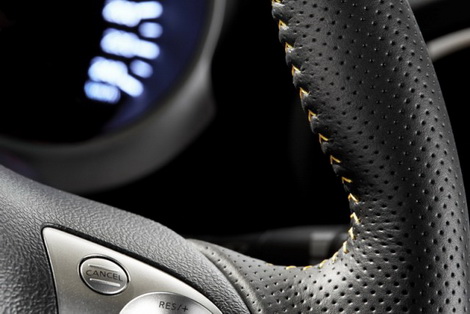
Worth Noting
While the new 1.2-litre petrol engine is a cracker it will be outsold by the ever popular 1.5-litre diesel. This engine is the only one in the facelift Juke not to be updated or replaced as its update snuck in pre-facelift. Its 104g/km emissions rating mean the diesel is two tax bands lower and €80 cheaper to tax than the petrol while its 4.0 litres/100km fuel consumption figure is impossible to achieve with the 1.2 petrol option.
Summary
Far from being a chance to simply add some chintz and send it out to an adoring public Nissan has used the Juke updated to address criticisms of the original car and make some small but significant improvements to it as well. Some will still not be able to take to the divisive looks but while competitors are struggling to get their rivals from drawing board to showroom the Juke has taken a step ahead of the mark they were aiming for.
